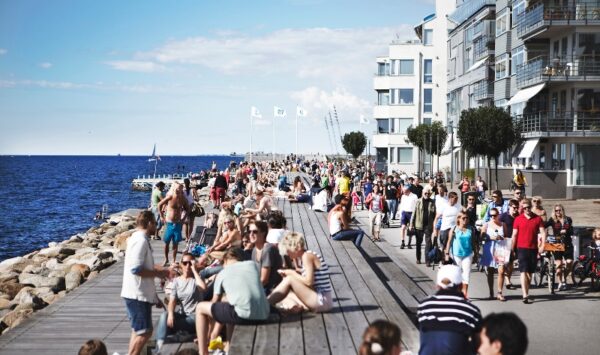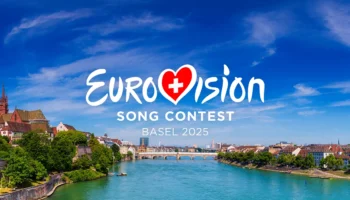Esctoday.com, in collaboration with Malmö Turism, invites you to discover Malmö and experience the 2013 Eurovision Song Contest. Today we we will have a look at Malmö’s transformation. We will discover how the 2013 Eurovision host city has evolved and transformed in the past years.
The Transformation of Malmö
Malmö has gone through an incredible change in the last 20 years. From run-down industrial town in the 80s, it has reinvented itself and found new strengths in environmental innovation, education, culture and tourism.
Industrial golden age
The word ”Malmö” means a mound of sand or gravel, reflecting the way the area looked when the city was founded back in the 13th Century. By the 16th Century, Malmö had become one of Sweden’s largest cities, with big squares and imposing brick townhouses boasting of the wealth of some of the more prominent merchant families. In 1658, it was part of the Swedish-Danish peace settlement which turned Malmö and all of Skåne over to the kingdom of Sweden.
During the industrial revolution, Malmö became one of Sweden’s most important industrial cities, and factories popped up along with worker housing, creating new, sprawling neighbourhoods. Shipbuilding, mechanical industries and textiles were Malmö’s strengths, employing a vast workforce but also creating a lack of housing that plagued the city well into the 60s.
The Tears of Malmö
In the 1980s Malmö suffered the same fate as many other proud industrial cities in that period, when the major industries closed down and the city fell on hard times. Unemployment was high, the city was run down, and in 2002 the giant Kockums crane from the shipyard in Västra hamnen – a defining presence on the skyline and in many ways a symbol of industrial Malmö –was dissembled and sold off to South Korea, where the Koreans call it ‘The Tears of Malmö’ after the sadness of the people of Malmö to see it go.
Turning over a new leaf
But although things were looking bleak, Malmö managed to turn itself around. A university was founded in the city in 1995, attracting young people and laying the foundations for new areas of commerce in the fields of IT, education, economics, sustainability, design and media. The following year, the first move was made towards building a bridge over the Öresund strait to Denmark.
For Malmö, this was an opportunity the city could not afford to miss. Going from industrial city to a hub for knowledge-based businesses wasn’t a pain free road but it was a necessary one to take and the politicians of Malmö pursued this new goal relentlessly throughout the 90s with initiatives like ‘business incubators’, office spaces where fledgeling companies could start out with a lower rent. When the Öresund bridge was inaugurated in 2000 Malmö was able to make full use of the new possibilities that came with the increased accessibility of the Danish market. A half hour commute between Malmö and Copenhagen created a whole new job market in the new Öresund Region. At the same time the BO-01 exhibition set a new agenda for housing in the city, and the construction of Santiago Calatravas twisted skyscraper, theTurning Torso, in Västra hamnen provided Malmö with a unique skyline and a new symbol to fill the void left by the Kockums crane.
The Green City
Sustainability and eco-friendly city planning is a key factor in today’s Malmö, and the city has become internationally recognized for its ground-breaking advances on sustainable development. Västra hamnen, formerly the site of Malmö’s shipbuilding industry, is now Sweden’s very first climate-neutral urban district, and other areas of Malmö are following suit such as the Augustenborg Eco-City and not least Hyllie, which is set to be the most climate-smart city district in the Öresund region in a few years’ time. Currently, China is building a large ecological city, Tangshan Bay Eco-City, modelled on Malmö.
A strong sustainable profile is the latest step in what can only be described as an amazing transformation for Sweden’s third largest city. And the journey is far from over. For example, Malmö became Sweden’s first Fairtrade City in 2006, a worldwide certification system to indicate that a city is continuously engaged in the issue of ethical consumption. The vision for Malmö is to make it world leading in sustainable city development by 2020.
Welcome to the new Malmö!
Cover Photograph: malmotown.com




